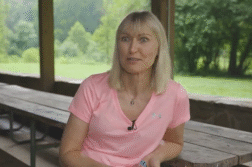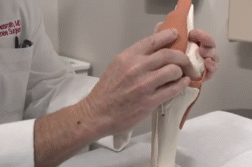DENVER, Colo. (Ivanhoe Newswire) — Imagine, the faster you grow, the faster your spine curves. That’s what happens when you’re a child with scoliosis. It can be painful and debilitating. Now there’s a new experimental procedure to correct the curvature.
Ever since Sophie Clem can remember, she’s loved to bend and bounce and flip and flop!
“I just have had quite a lot of balance and on the bars I just ended up getting high scores, ” said 11- year old Sophie Clem.
But this is the first time in five months she’s been back in the gym. Sophia was worried her tumbling days were numbered. Diagnosed at age seven with scoliosis.
“it just kinda looked like a curve,” said Sophie.
Sophie’s mom, Denise Clem, said, “We tried bracing, physical therapy, chiropractic care.”
But her condition got worse. What started as a 14 degree curve was now 36 degrees. Pediatric Orthopedic Surgeon Jaren Riley, MD at Rocky Mountain Hospital for Children’s main concern for kids with scoliosis: keep them moving and maintain their range of motion. One option, a traditional spinal fusion that would likely stop Sophia’s growth or a new experimental surgery called vertebral body tethering.
Dr. Riley said, “we place these screws, one screw into each of these individual bones of the spine. And then between each of those screws we place a rope. Then tension that rope between the screws to make this curve straighten out.”
Think of it like braces for the spine.
He continued, “so the long side of the spine stays put, the short side keeps growing and the curve starts to straighten out.”
Doctors saw immediate results. On the left is Sophia’s spine before surgery. On the right, after.
“It feels like a huge step forward, quite honestly,” said Dr. Riley.
“The one thing I want to get back is like handstands or cartwheels on the beam cause their really fun to do,” Sophie told Ivanhoe.
The system was just approved by the FDA last month. Risks include injury to the heart and lungs, infection, nerve damage and paralysis. Because it is new, long term issues are not known.
Contributors to this news report include: Marsha Lewis, Field Producer; Rusty Reed, Videographer; Cyndy McGrath, Supervising Producer; Jamison Kozcan, Editor.
To receive a free weekly e-mail on Medical Breakthroughs from Ivanhoe, sign up at: http://www.ivanhoe.com/ftk
MEDICAL BREAKTHROUGHS
RESEARCH SUMMARY
TOPIC: BRACES FOR THE SPINE GET SOPHIA UP AND TUMBLING!
REPORT: MB #4624
BACKGROUND: Scoliosis is a condition that causes the spine to curve sideways. There are several different types of scoliosis that affect children and adolescents. By far, the most common type is “idiopathic,” which means the exact cause is not known. Most cases of idiopathic scoliosis occur between age 10 and the time a child is fully grown. Scoliosis is rarely painful—small curves often go unnoticed by children and their parents and are first detected during a school screening or at a regular check-up with the pediatrician. Research shows that in some cases genetics plays a role in the development of scoliosis. Approximately 30 percent of patients with adolescent idiopathic scoliosis have a family history of the condition.
(Source: https://orthoinfo.aaos.org/en/diseases–conditions/idiopathic-scoliosis-in-children-and-adolescents/)
TREATMENT: Treatment of scoliosis is based on the severity of the curve and the chances of the curve getting worse. There are three main categories of treatment: observation, bracing (for example, thoracolumbosacral orthosis or TLSO back brace), and surgery. Juvenile idiopathic scoliosis has the highest risk for getting worse of all of the idiopathic types of scoliosis. Bracing can be tried early if the curve is not very severe. The goal is to prevent the curve from getting worse until the person stops growing. Since the curve starts early in these people, and they have a lot of time left to grow, there is a higher chance for needing more aggressive treatment or surgery.
(Source: https://www.medicinenet.com/scoliosis/article.htm#what_is_the_treatment_for_scoliosis)
NEW TECHNOLOGY: Jaren Riley, MD, Pediatric Orthopedic Surgeon at Rocky Mountain Hospital for Children talks about vertebral body tethering, “So essentially in a curved spine, you have a longer side and a shorter side. And we go through a camera approach inside the chest to the long side of the spine and we hold onto it to stop the growth. So, the long side of the spine stays put. The short side keeps growing. And the curve starts to straighten out over time. Now what holds the bones together in a fusion is a rod and then bones that grow together to become solid with this surgery. We have a rope that holds the bones together, so you still have motion there and you still have the ability to turn, bend and to twist while the spine continues to grow into a more natural shape.”
(Source: Jaren Riley, MD)
FOR MORE INFORMATION ON THIS REPORT, PLEASE CONTACT:
Mari Abrams
720-754-4287
Mari.abrams@healthonecares.com
If this story or any other Ivanhoe story has impacted your life or prompted you or someone you know to seek or change treatments, please let us know by contacting Marjorie Bekaert Thomas at mthomas@ivanhoe.com




